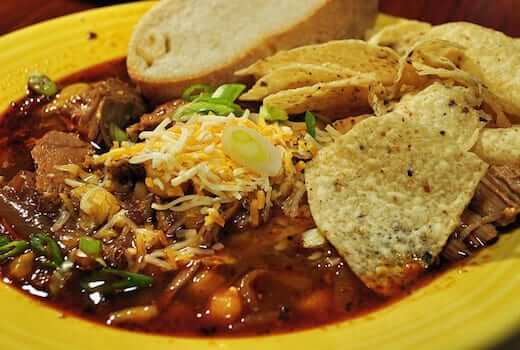What is Posole?
Posole or Pozole is a festive soup with its roots in Latin America. It is a soup usually served on occasions and is a celebrated dish particularly in Mexico and some South Western parts of North America. Prepared only with the freshest ingredients, it contains a variety of food groups. Although it is quite rare…
This post may contain affiliate links. Please read our disclosure policy.
Posole or Pozole is a festive soup with its roots in Latin America. It is a soup usually served on occasions and is a celebrated dish particularly in Mexico and some South Western parts of North America. Prepared only with the freshest ingredients, it contains a variety of food groups. Although it is quite rare to find pozole in stores, its recipe has finally made its way to millions of kitchens around the world.

What is Pozole Made of?
The main ingredient of pozole is hominy. Hominy is corn that has been dried, treated and refined to make the soup. Traditionally, cooks have to soak the corn in an alkaline agent like lime juice in order to remove the outer shell. Thereafter, it is dried and ground to the desired consistency. The grounding process is mainly to achieve a smoother consistency for easier digestion. Today, you can purchase hominy in specialized stores instead of making it from scratch.
In addition to hominy, pozole is also made with meat, vegetables and spices. Most pozole-lovers like it spicy, which is why hot chili peppers are usually added. Most ingredients used to make the soup are actually garnishes that you will add after it is cooked.
“Pozole” photo credit: jeffreyw
What is Pozole’s Nutritional Profile?
The nutrients your pozole contains will vary according to the vegetables and spices you add to the recipe. Traditional recipes often require cabbage, tomatoes, hot peppers, cilantro, avocadoes and of course, hominy. When these ingredients are combined, they make a soup rich in vitamins A, B, C and K; fiber, calcium, iron; copper, manganese, phosphorus and zinc.
What is Pozole’s Effect on Your Health?
Pozole is great for weight management because of its low calories. A bowl of pozole has 120-150 calories. Because it’s filling and nutrient-rich, you can even use it as a replacement for lunches and supper. Diabetics can also enjoy this spicy soup because it releases glucose slowly into your system, which is the secret to keeping blood sugar levels normal.
Studies show that most people do not ingest enough minerals and vitamins. Enjoying several helpings of pozole a week can provide your body with hard-to-find minerals like copper and zinc.
How to Make Pozole
To make pozole at home, you will need:
- 2-3 cups fresh hominy
- 1-2 pounds of pork or chicken
- 3 cloves of garlic, finely chopped
- 2 teaspoons salt
- 6 cups water
Step 1:
Combine all ingredients in a large pan and bring to the boil. Reduce heat and simmer until meat is tender.
Step 2:
Remove from heat and scoop out meat pieces. Shred meat and return it to the pan. Simmer again for 10-15 minutes.
Step 3:
Serve soup with shredded cabbage, diced avocadoes, lime wedges, cilantro and oregano as garnishes.
You can make pozole an everyday occasion by following this simple recipe. Feel free to add your own seasoning with spices like cumin and chili powder. You can replace meat with more vegetables for a vegetarian recipe, and substitute pork with all kinds of meat and seafood.

Leave a Comment